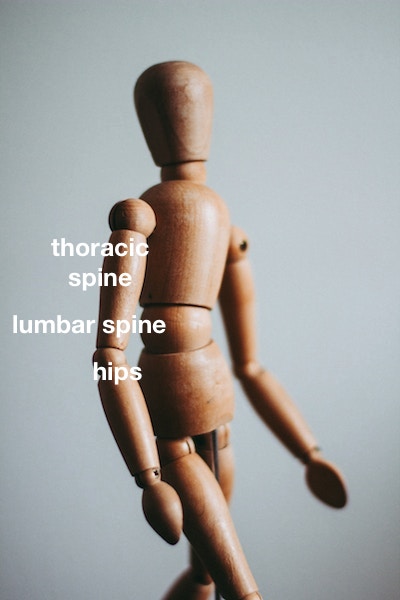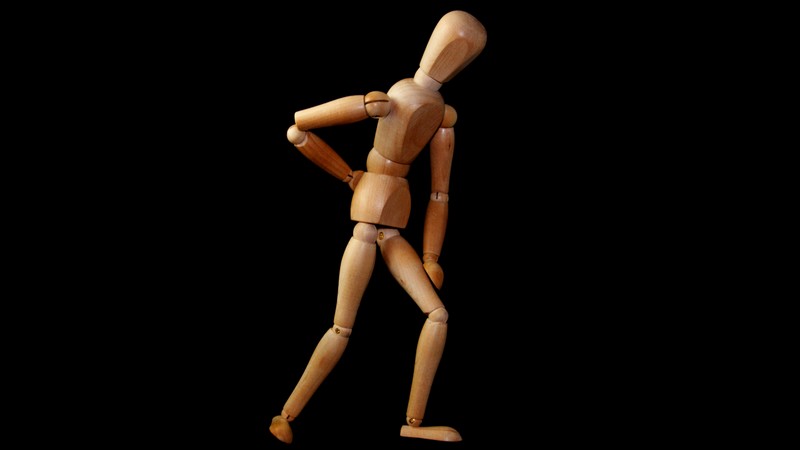Low back pain – those three little words that make us all cringe. It’s estimated that over 70% of people will experience low back pain in their lifetime. Often, it can be debilitating, preventing us from doing many of the activities we love like walking, swimming, gardening or running.
Several different structures contribute to low back pain including discs, joints, muscles, nerves and ligaments. Pain might be local to the area, more towards the back of the hip or down to the leg. Symptoms might also include feelings of numbness, tingling or weakness.
The low back (lumbar spine in medical terms) is comprised of five vertebrae.
Surprisingly, the lumbar spine is rarely the main culprit in low back pain. It is usually the victim. And mistaking it for the cause, rather than the victim, can lead to problems over time.
So what is the real culprit in low back pain?
We don’t have to look too far to identify two prime suspects – the thoracic spine (mid back) and the hips. These are situated directly above and below the lumbar spine.
The reason that the lumbar spine ends up being the victim is that it has a unique ability to compensate for restricted motion in the areas above and below it.
The motions of the lumbar spine are as follows:
- Flexion: 40-60 degrees
- Extension: 20-35 degrees
- Rotation: 3-18 degrees
- Side bending: 15-20 degrees

Example
We are always told that flexing and rotating while we lift something off the floor can injure our low back. The lumbar spine only has minimal rotation (3-18 degrees) so the vast amount of our rotation actually comes from the thoracic spine and from the ability of the hips to rotate.
If there is rotational restriction in either the hips or thoracic spine, guess where the extra motion comes from?
Correct, the lumbar spine.
So a rotational restriction (in either the thoracic spine or the hips) causes the lumbar spine to compensate for this loss of motion by rotating outside its normal limits. It will continue doing this until something fails, leaving us with a tremendous amount of low back pain.
For too long the lumbar spine has been thought of as the culprit when, in most cases, it is actually the victim. If the real culprit isn’t treated, then low back pain is likely to linger. To make a lasting improvement to low back pain, it is almost always important to treat the thoracic spine and hips. This is where a good Osteopath can help. So get yourself back to full function and alleviate that low back pain!

If you would like to speak to Dr Jake Martin or one of our other practitioners about how Osteopathy could help treat and prevent low back pain, please feel free to ask a question, contact us or email us at:
info@melbourneosteopathycentre.com.au

